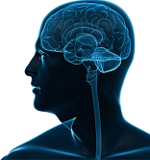June 19, 2013
Researchers at the Albert Einstein College of Medicine have just published a study in the peer-reviewed journal Radiology showing that soccer players who “head” the ball with high frequency show abnormalities in the white matter of their brains and poorer memory scores on cognitive tests. Read More
June 11, 2013
The American Academy of Sleep Medicine has announced the results of a recent study showing that bright light therapy following Mild TBI (concussion) may improve sleep, cognitive and brain function. The study results were presented at the June 3, 2013 meeting of the Associated Professional Sleep Societies LLC and published in an online supplement to the journal Sleep. Read More
May 30, 2013
Further evidence that the term “mild” should never be used in connection with brain injury can be found in a study published in the March 2013 issue of the Journal Radiology.
In the study, NYU medical school researchers measured changes in global and regional brain volume over a one year period in 30 patients with “mild” traumatic brain injuries and typical post-injury symptoms including anxiety, depression and fatigue, and other symptoms such as headache, dizziness and perceived cognitive problems.
Read More
May 9, 2013
We live in a world of “show me” juries, programmed to believe that most people bringing personal injury claims to trial are trying to get something for nothing. They want to be convincingly shown that a real injury exists—that the injured person can prove a brain injury or other debilitating condition.
Proving a Mild Traumatic Brain Injury to a Jury
For example, some brain injuries produce bleeding in the brain that clearly shows up on conventional diagnostic images like CT scans—computerized tomography that combines a series of X-ray views taken from many different angles and processed by a computer to create cross-sectional images of the bones and soft tissues inside your body—and/or MRIs—magnetic resonance imaging that uses a magnetic field and radio waves to create detailed images of the organs and tissues within your body—or, that produce visible neurological signs like seizures, visual problems, speech problems, or motor problems.
Proving a brain injury to a jury where visible evidence is available is not difficult. However, we know that many mild traumatic brain injuries are “invisible” to these standard tests, yet are serious enough to greatly impact quality of life. In these cases, the challenge is to help the jury understand those long-term consequences, even when the injury is not visible.
Read More
